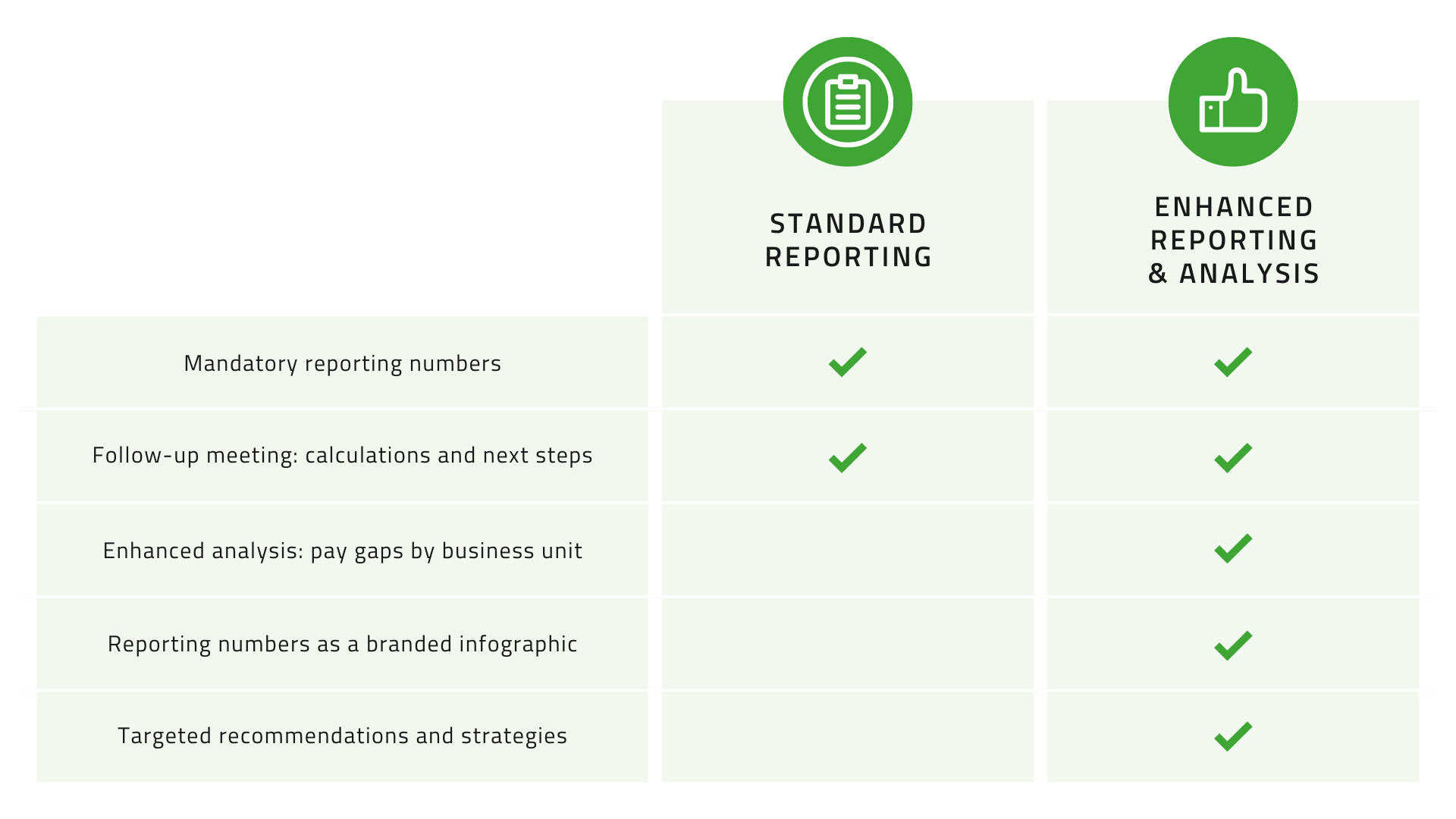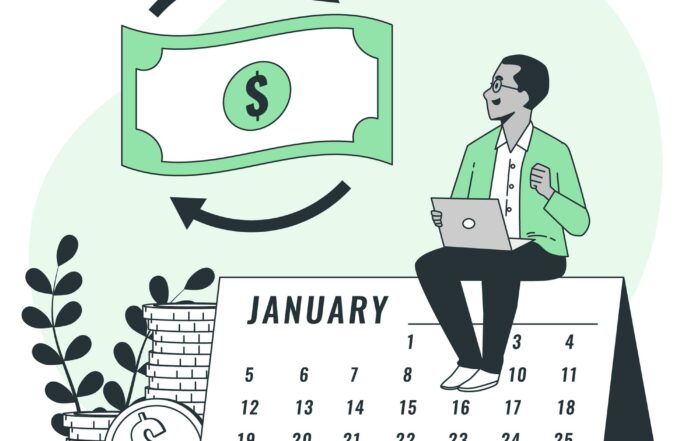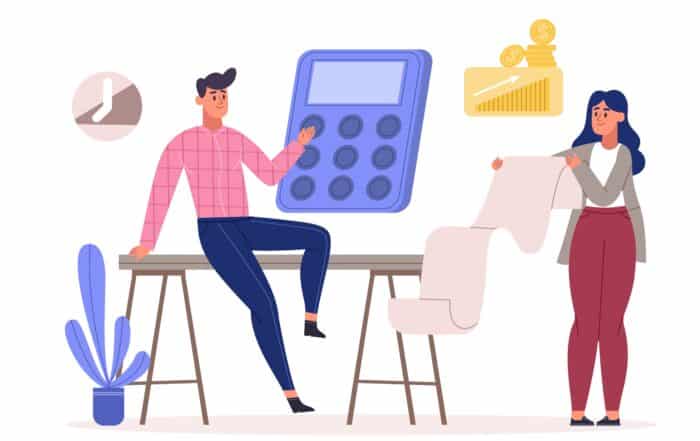Gender Pay Gap Reporting
Ensure your organisation complies with gender pay gap legislation
The gender pay gap is the difference between average earnings of men and women in an organisation. If you’re an employer with a headcount of 250 or more on your snapshot date, you are legally required to publish your gender pay gap.
Gender pay gap is not the same as equal pay. The gender pay gap is a measure of the difference between men and women’s average earnings across an organisation. Whereas equal pay is a legal obligation to ensure that men and women in the same employment, performing equal work, must receive equal pay as set out in the Equality Act 2010. Find out more about gender pay gap vs. equal pay.
How it works
We have two gender pay gap reporting options: standard and enhanced.

The standard approach involves asking you to send us your data and calculating the six numbers required for gender pay gap reporting. We put together a summary document, which includes the mandatory reporting numbers along with some commentary/guidance. Then, in a follow-up meeting, we discuss your pay gap numbers/calculations and offer guidance on next steps.
Our enhanced approach starts with the same process as the standard one. We then take your mandatory reporting numbers and transform them into a branded infographic suitable for presentation. Your detailed analysis includes a breakdown of your pay gaps by business unit, along with our recommendations and targeted strategies for improvement.
Gender pay gap reporting is a legal requirement
Organisations with 250 or more employees are required to publish a statement on the gender pay gap—but they don’t have to explain why it exists. However, it’s better if they do.
If you publish a pay gap number of 25%, it sounds bad and doesn’t actually tell anyone anything useful. But if you publish this data and explain your thinking behind it—for example, by saying that “80% of leadership team members are male” while laying out a plan to introduce more women into senior roles—people will understand the information and the action you intend to take.
Communication
It is important to communicate any new changes and policies so that your employees feel part of the process. This can help develop trust and a sense of purpose that leads to more engaged colleagues.
We offer different reward communications packages to suit your needs and help communicate clearly and honestly to employees.
Related Reading
Case Studies
View our gender pay gap reporting case studies.
Our Services
Reward Consultancy
Pay Services
Job Evaluation
Total Reward




